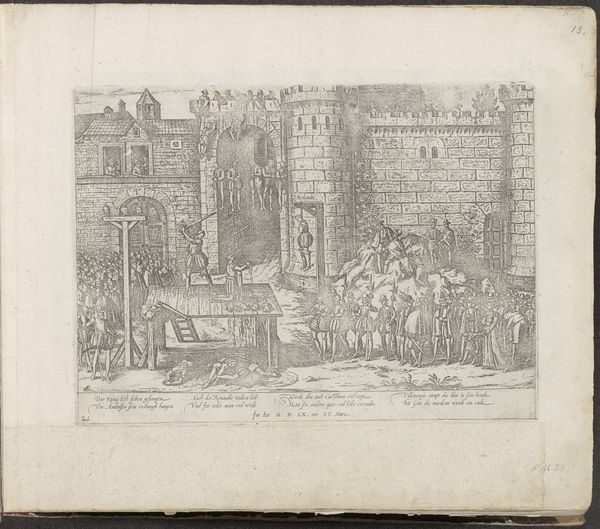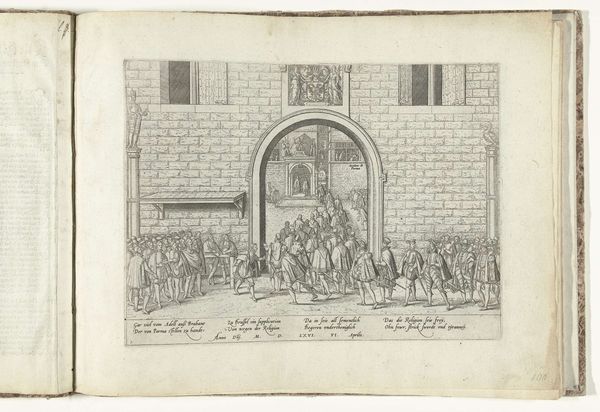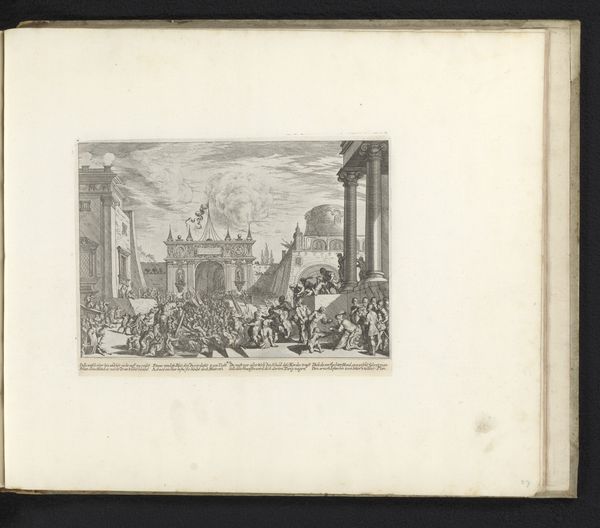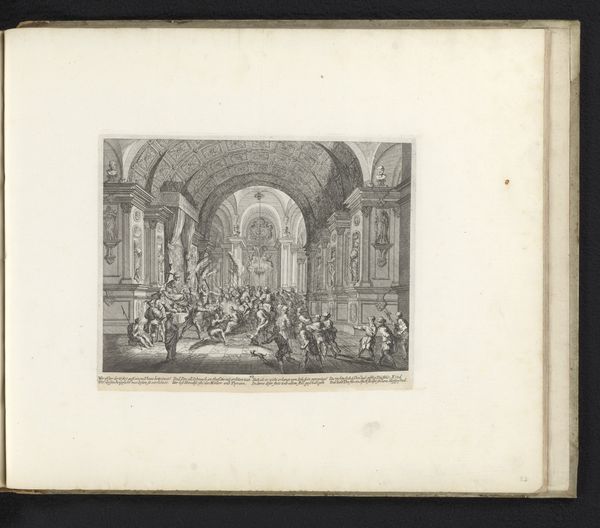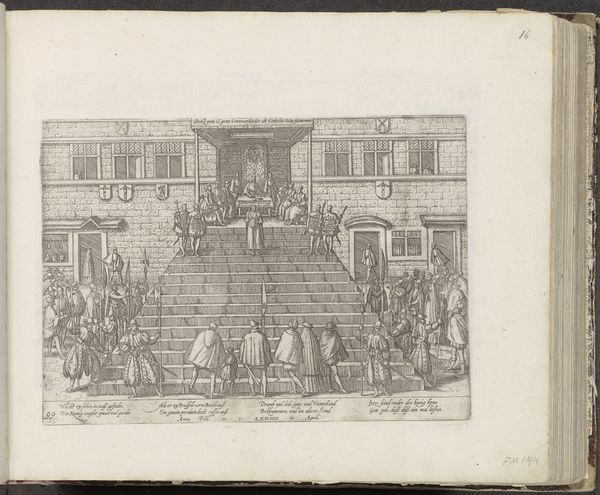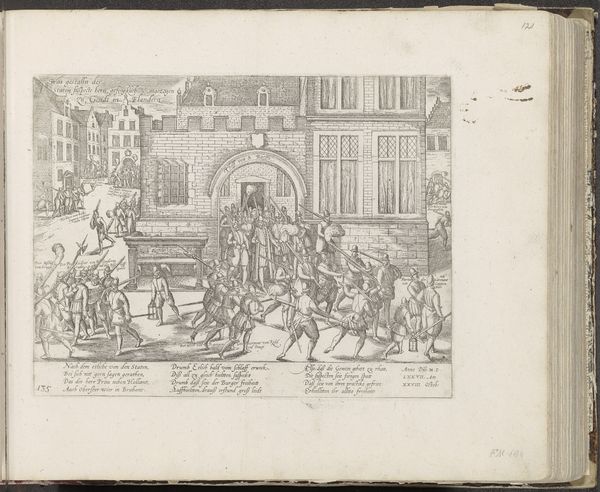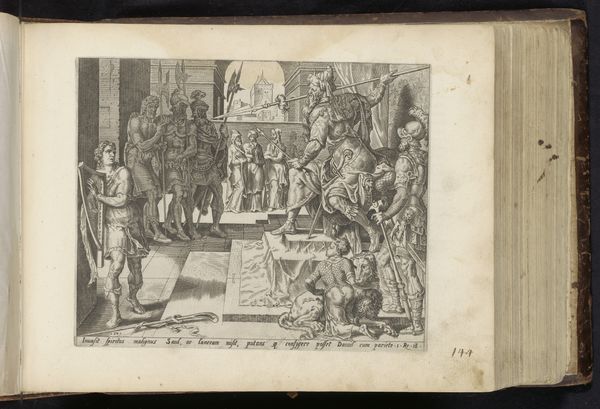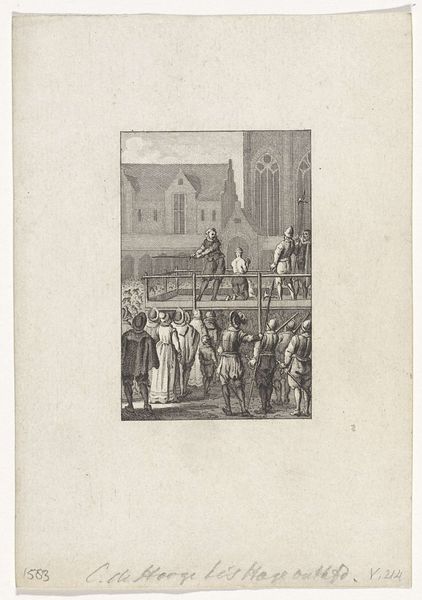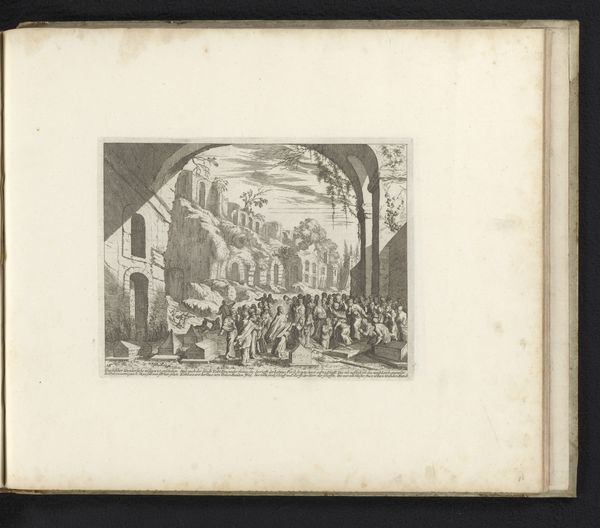
print, engraving
# print
#
pen sketch
#
genre-painting
#
history-painting
#
northern-renaissance
#
engraving
Dimensions: height 208 mm, width 279 mm
Copyright: Rijks Museum: Open Domain
Curator: This is Frans Hogenberg's "Aanbieding van het Smeekschrift van de edelen, 1566," made sometime between 1568 and 1572. The Rijksmuseum holds this print in its collection. Editor: My initial reaction is one of subdued tension; the somber monochrome of the print, combined with the massed figures, hints at an event laden with potential for conflict. Curator: Absolutely. Let’s observe the structure. Hogenberg employs a clear perspectival scheme, guiding our eyes from the foreground crowd to the elevated presentation within the architectural setting. Note how the archway serves as a framing device, heightening the performative aspect. Editor: Yes, the architectural space feels constructed to emphasize power dynamics. Considering its materiality as an engraving, we need to acknowledge the labour involved. The lines etched to create this scene signify deliberate manual effort in reproducing and disseminating this image, highlighting a political act for the masses. Curator: Indeed. The precise, almost clinical rendering emphasizes a sense of controlled order, but the sheer number of figures introduces a subtle discord, wouldn't you agree? This tension speaks to the political and religious upheavals of the time. Editor: Precisely. And how this medium, an easily reproducible print, allowed Hogenberg to directly engage with that tumultuous social context. Its production and distribution speak volumes about the Reformation, and challenges around social hierarchies that shaped the late Renaissance. Curator: A final thought—notice how Hogenberg balances detailed depictions of individual figures with the broader representation of the collective will? The semiotics involved here convey, perhaps, the force of unified action alongside individuality? Editor: Thinking about the social context, it’s striking to consider how Hogenberg leveraged the reproducibility of printmaking to make this moment accessible and reproducible for political reasons. Curator: A powerful combination of aesthetic construction and practical considerations resulted in a really potent image for the ages. Editor: Absolutely. Thinking through materiality really helps highlight its lasting social impact.
Comments
No comments
Be the first to comment and join the conversation on the ultimate creative platform.
